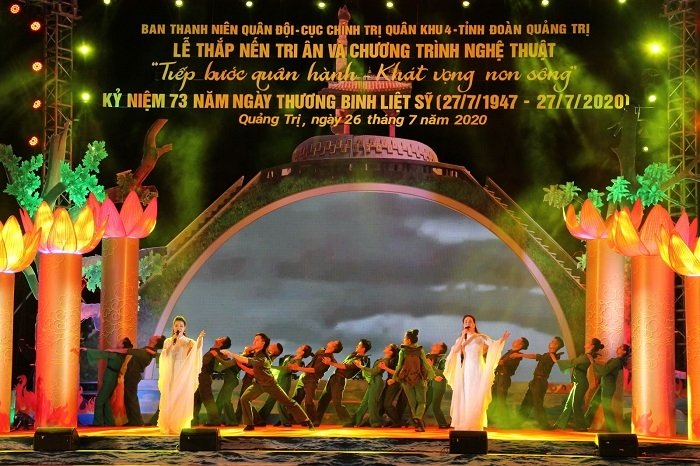



An art performance during the programme. (Photo: quangtritv.vn)
The event was attended by Vice President Dang Thi Ngoc Thinh, former Vice President Truong My Hoa, and representatives of ministries, sectors and Quang Tri.
The programme featured songs showing gratitude, respect and tribute to heroic Vietnamese mothers, fallen soldiers, war invalids, sick soldiers, policy beneficiary families and revolutionary contributors for their sacrifices in the struggle for national liberation, construction and protection.
Within the programme, Vice President Thinh presented VND230 million (over US$10,000) from the National Fund for Vietnamese Children (NFVC) to children of policy beneficiary families and disadvantaged children in Quang Tri Province.
Vice President Dang Thi Ngoc Thinh (L) presents VND230 million from the National Fund for Vietnamese Children to children of policy beneficiary families and disadvantaged children in Quang Tri Province.
Representatives of ministries and sectors also handed over many gifts to policy beneficiaries and needy children who have risen above difficulties to excel in their studies, while presenting the token of six gratitude houses and eight savings books to policy beneficiary families.
The flower lantern release on Thach Han River.
Also, on Sunday evening, Vice President Thinh offered incense and attended a candlelight tribute at the Quang Tri Ancient Citadel, as well as a flower lantern release on the southern bank of Thach Han River in Quang Tri Town.
The Vice President and delegations paid homage and expressed infinite gratitude to President Ho Chi Minh and commemorated the soldiers and people who laid down their lives for national independence and freedom, and for the happiness of the people.
On the same night, localities across Quang Tri simultaneously organised candlelight tributes at nearly 55,000 tombs in 72 cemeteries across the province, including the Truong Son and Road 9 National Martyrs’ Cemeteries where more than 21,000 fallen soldiers have been laid to rest.
Source: NDO